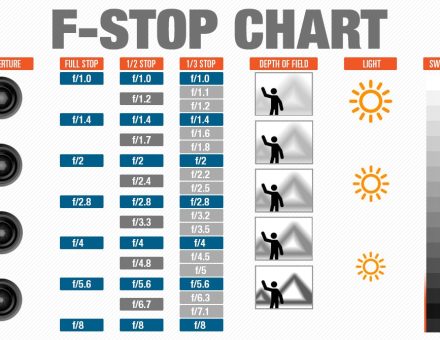One modification that is commonly requested by our Customers is changing the F/# of a standard lens. The most common reason to stop down a lens is to resolve more detail and gain greater depth of field in an image. However, the term itself can sometimes be confusing, and there are limits to how much you can stop down a lens before encountering diminishing returns.
“Stopping down a lens” refers to increasing the numerical f-stop value. This decreases the size or diameter of the aperture of a lens, which usually has the effect of sharpening detail resolution and increased depth of field (more on this later!). Sounds great! Why not do this all the time?
In the figure below, you’ll notice a shallow depth of field at the widest aperture, with more detail and depth of field gradually coming into view as you stop the lens down more.
Depth of Field from an imaging point of view.


Now, astute readers may ask, “Hold on a second; from a physics standpoint, doesn’t increase the F/# have the effect of decreasing the diffraction limit, and therefore resolution?” This is very true. However, this only applies to diffraction-limited optical systems. In most commercial optical systems, the overriding factor in as-built lens performance is actually an aberration. Since many aberrations are field-dependent, stopping down the lens has the effect of reducing aberration, and therefore increasing MTF. As the lens is stopped down further and the actual performance of the lens approaches the diffraction limit, physics will take over and lens performance will again start to decrease. Hence, there is a limit to how much stopping down a lens can help MTF, and there are also trade-offs to consider for doing so.
Resolution: Example of stopping down a Sunex Standard lens in Zemax.




The tradeoff to the benefit gained by stopping down is less light and more diffraction. The smaller aperture size will allow less light to reach the image sensor. In order to compensate for the reduction in light, some options include increasing illumination, increasing signal gain (ISO value) of the sensor, or increasing exposure time. In addition, as noted above, diffraction increases as the aperture size get smaller, until you reach a point of diminishing returns when the lens performance approaches the diffraction limit.
In the Zemax diagram above, the red horizontal line represents 80% MTF. As the lens is stopped down from F/3.3 down to F/8.0, overall MTF performance across the field increases, before ultimately succumbing to the diffraction limit, and dropping to 70% MTF at its peak. Also evident is the increase in depth of field (trough to trough) as the f/# increases. From this analysis, it would appear that stopping down to F/5.6 would be a reasonable trade-off between light and MTF.
Finally, it’s important to note that stopping down a lens does increase DOF independent of MTF. This can be especially beneficial in a well-lit use-case where DOF is paramount, but stopping down a lens in a less than ideal lighting environment may result in a dark, or noisy image resulting from sensor effects, which may negate any gains in MTF of DOF. The key is to find the optimum balance for your application and use case. For more information on finding the ideal lens and aperture value for your imaging application, contact sales@sunex.com!


